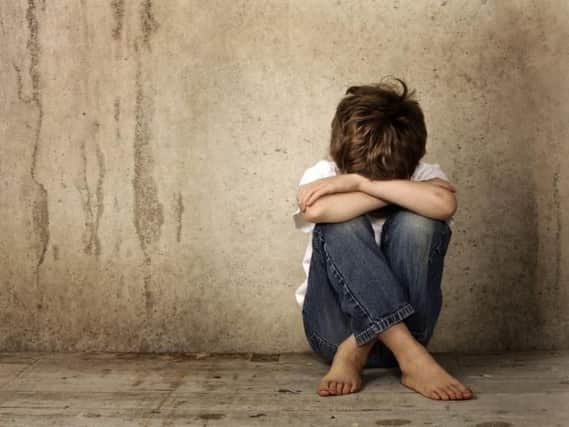Alarming results reveal Calderdale primary school children have been self harming


Year five and six pupils were asked a number of questions as part of an e-survey into their health and wellbeing which has been carried out regularly each year since 2012.
The results of the latest survey were being considered by Calderdale Council’s Children’s and Young People’s Scrutiny Board.
Advertisement
Hide AdAdvertisement
Hide AdIssues explored include the children’s health, emotional wellbeing and safety, with more than 3,000 children taking part,
The results found that three out of four children felt they were thriving but half worried about exams and one in four had seriously thought about harming themselves.
Self-harm is more common in young people than adults and is associated with increased risk of suicide, says the report.
Locally, 26 per cent of pupils had seriously thought about harming themselves and a further 23 per cent had done so by cutting or some other way.
Advertisement
Hide AdAdvertisement
Hide AdIn terms of life satisfaction, 79 per cent felt they were thriving but 14 per cent potentially struggling and seven per cent of the children felt they were suffering.
Only 18 per cent had high self-esteem, with 20 per cent of pupils feeling they had low esteem and the remaining two thirds feeling they had moderate self-esteem.
Half of the pupils reported they had been bullied, three out of ten of those physically and four out of ten in other ways, such as name-calling or being left out of activities.
Councillors on the board heard the reports generally provided rich and valuable insight into the lives of children and young people in Calderdale – a survey among some secondary age pupils is carried out.
Advertisement
Hide AdAdvertisement
Hide AdProfessionals in Calderdale’s Public Health and Children’s and Young People’s Services directorates receive the results and with partner agencies can use them to better deliver services to help the borough’s children and young people be healthy, happy and safe.
Schools also receive copies to better inform the health and wellbeing support they offer their children
What else did the survey reveal?
Councillor Scott Benton (Con, Brighouse) asked what it was hoped to be achieved by asking children of that age – pupils in those years are aged around ten and 11 – what their sexual orientation was.
The council’s Assistant Director for Child Health Improvement and consultant in Public Health, Ben Leaman, said including the question was in line with national guidance given to councils for the surveys.
Advertisement
Hide AdAdvertisement
Hide AdIn terms of their sexual orientation, 59 per cent of the year five children responding said they were heterosexual, 11 per cent were gay, lesbian, bisexual or other and 31 per cent preferred not to say. Of year six pupils 74 per cent said they were heterosexual, seven per cent were gay, lesbian, bisexual or other and 19 per cent preferred not to say.In headline terms, the survey showed that three out of four children ate breakfast daily and the same number brushed their teeth twice or more a day – but only thirty per cent of pupils responding achieved an hour of physical activity daily.
Nine out of ten of the children had never smoked, half of them felt safe online and seven out of ten had never tried alcohol.Healthwise, almost 60 per cent felt they were the right weight, ten per cent under weight and 18 per cent either slightly or very overweight (three per cent).
Of concern is that compared to last year, when half of pupils ate the recommended five portions of fruit and vegetables a day, this year’s figures revealed less than a quarter did so.
Where exercise was concerned, 60 per cent of those not averaging an hour’s physical activity a day felt there were more interesting things to do, they could not be bothered or did not have time.Very few of the children have smoked, only three out of ten had tried alcohol and of those the vast majority drank rarely or never and had never been drunk.
Advertisement
Hide AdAdvertisement
Hide AdUsing the internet provides opportunities for fun but also carries risks, says the report. Half of the children felt safe online all the time and three quarters felt safe online quite often. Four per cent never felt safe online.
Of those who used social media around seven out of ten used it for messaging and a similar figure for content sharing. Half used online gaming at least weekly.
Five per cent had been involved in “sexting” with the majority having received an image. The report says there is an upward trend in recent years of sexting cases involving children.
This survey is the first time that question has been asked and going forward council professionals will look to explore why children and young people get involved in sexting as over half gave a reason as “something else” over other options they were provided with which included being threatened and peer pressure.